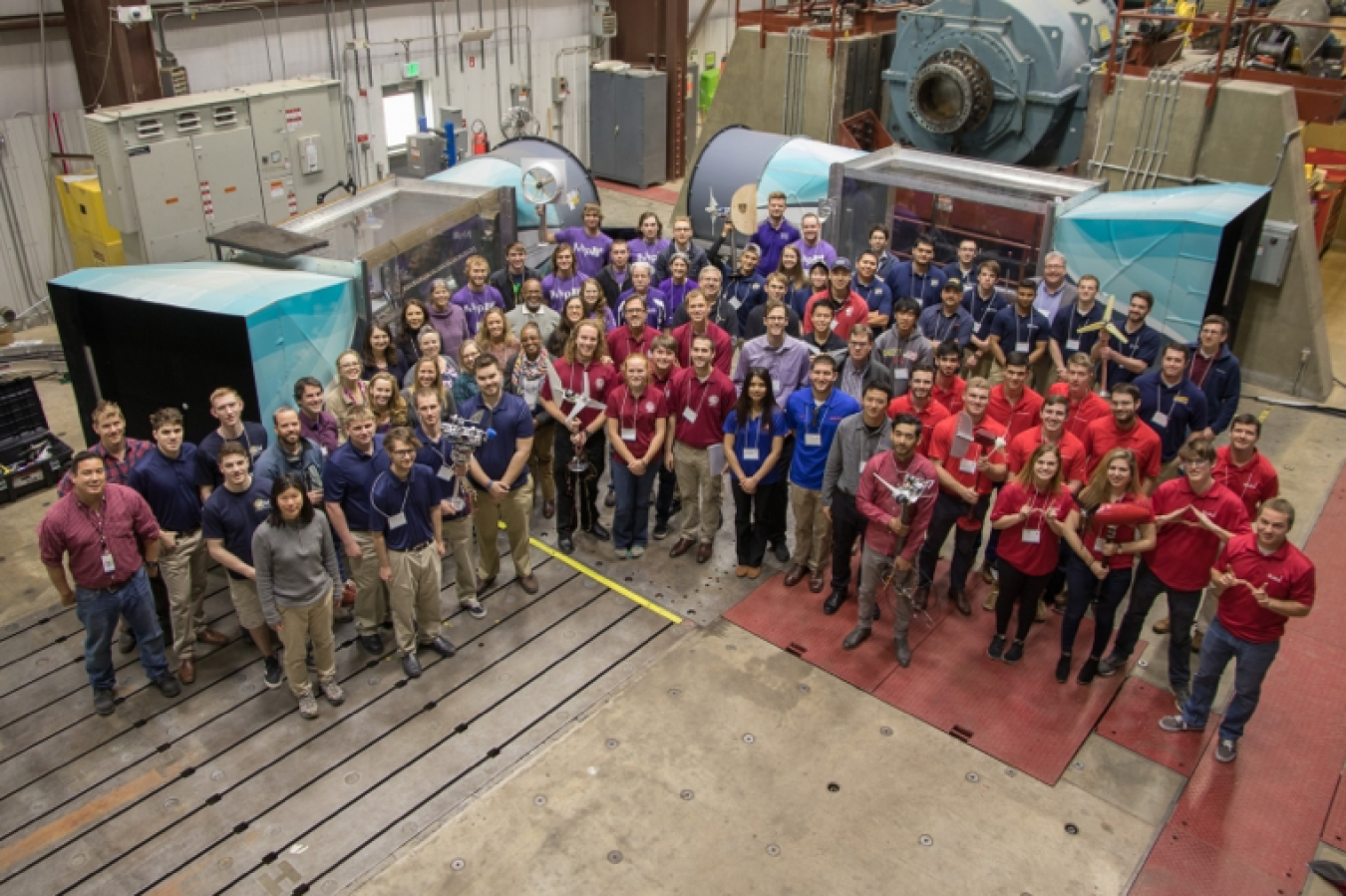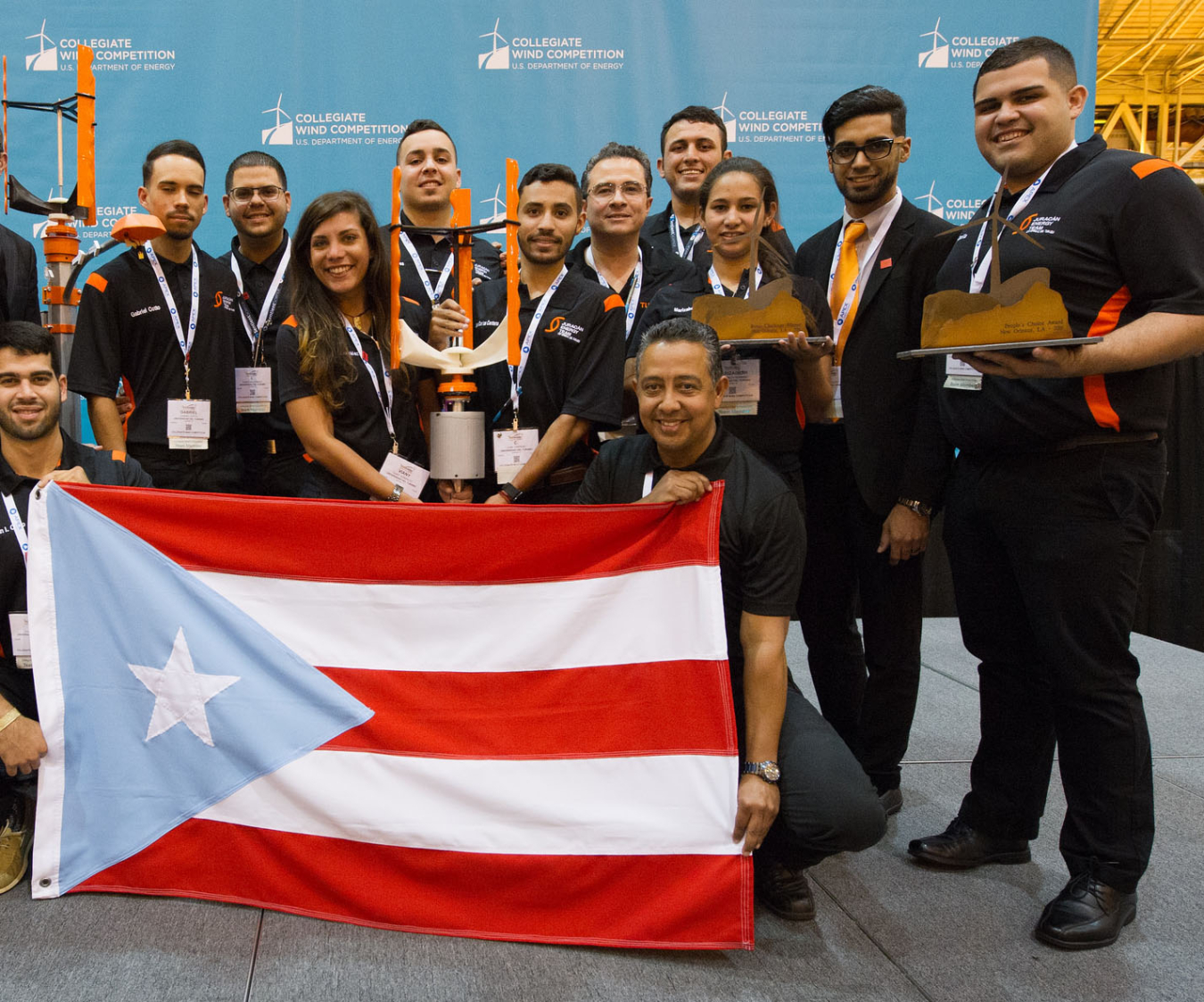Collegiate Wind Competition helps undergraduates learn the real-world skills they need to grow America's energy economy.
May 3, 2018
Wind energy is booming in the United States. There’s now more than 89,000 megawatts of installed wind capacity, enough to power 24 million homes for a year! And it’s just the beginning.
Over 100,000 people work in the U.S. wind industry, and those numbers are expected to keep growing; wind turbine technicians are the second fastest growing jobs of the decade. That's why it's more important than ever to prepare America’s future workforce with the real-world skills they need through efforts like the U.S. Department of Energy Collegiate Wind Competition, which challenges undergraduates to design and build a wind turbine. Teams also develop a business plan to market their project.
This year’s competition runs May 8 through 10 in Chicago , coinciding with the annual American Wind Energy Association WINDPOWER Conference and Exhibition. Here are a few more facts about the competition:
1. A Dozen Teams Will Be There

These 12 university teams from across the United States and Puerto Rico are participating:
Returning from 2016:
- The California Maritime Academy
- California State University, Chico
- Kansas State University
- Northern Arizona University
- The Pennsylvania State University
- Universidad del Turabo (Puerto Rico)
- University of Wisconsin–Madison
And Welcoming:
2. To Win It All, You Need to Be Well Rounded

The Collegiate Wind Competition consists of four main contests: Business Plan, Technical Design, Siting Knowledge, and Turbine Testing. Tasks include written reports, oral presentations, testing model turbines in a wind tunnel, and a public business pitch before a panel of wind industry experts. Teams can earn up to 1,000 combined points, and the team with the highest point total will be crowned Collegiate Wind Competition champions. There are also awards for teams that score the highest in each contest, win the bonus competition, or are picked as the overall “People’s Choice” winner based on text voting at the event.
3. It’s Not Just for Engineers

America’s wind industry currently supports more than 100,000 jobs including researchers, engineers, educators, transportation workers, salespeople and other positions. Similarly, students participating in the Collegiate Wind Competition are seeking degrees in science and engineering as well as disciplines like business and marketing--all essential in building a thriving energy workforce.
4. Each Team Is Solving Big Problems

Each team participating in the Collegiate Wind Competition aims to solve complex energy and environmental problems through their wind turbine designs and business plans. These include well-researched solutions such as using wind energy to provide emergency or backup power, desalinate water for coastal communities, and generate electricity for communities in developing countries.
5. We’ll Be Covering It!

Go to wind.energy.gov/windcompetition to learn more about the competition. We’ll also be sharing live updates, photos, interviews and more on Facebook and Twitter using #CWC18.
Paul Lester

Paul Lester served as Digital Content Specialist in the Office of Public Affairs.
Paul was born in Ohio but spent most of his life in Florida, where he worked as news researcher/archivist and online editor for the Orlando Sentinel.
He moved to Washington in 2008 for a web editor role with the Guardian before working as a contractor for the Wind and Water Technologies Office, Small Business Administration and Office of Energy Efficiency and Renewable Energy.
Paul joined the Energy.gov team in March 2015, contributing to Energy Blog and assisting with managing the Energy Department’s social media channels. When he’s not in the office, Paul can be seen slowly running around D.C. training for his next half marathon.

